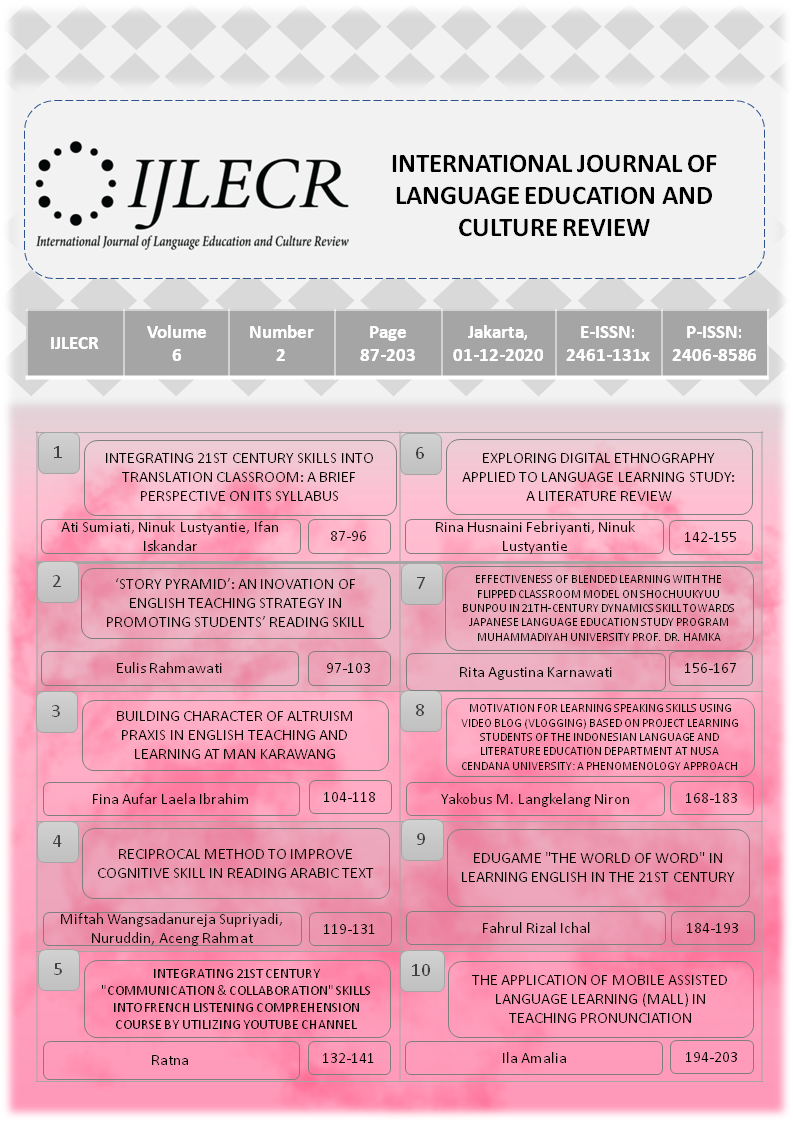RECIPROCAL METHOD TO IMPROVE COGNITIVE SKILL IN READING ARABIC TEXT
DOI:
https://doi.org/10.21009/IJLECR.062.14Keywords:
Reciprocal, Cognitive Skills, Arabic Text, Method, LearningAbstract
The purpose of this study is to improve reading skills in the cognitive aspects of Arabic. This study was conducted classroom action research with reciprocal method in reading learning. There are four steps in reciprocal method, including: 1) Predicting, 2) Clarifying, 3) Questioning, 4) Summarizing. The process of collecting data were observations, questionnairs, field notes and tests. To determine the level of reliability of the test, the reliability test was performed using the Kuder Richardson formula (KR-20). After the validation and reliability tests were carried out, it was stated that the test instruments were very reliable and valid. Qualitative data is validated through data triangulation which includes four ways namely; credibility, transferability, dependability, and confirmability. As a result, students' reading skills in cognitive aspects experienced a significant increase. The average value in the pre-cycle is 55.27 then in the first cycle the average reading skill score rises to 86.02. The average value increases again in the second cycle, which is 91.16. This proves that the right method in learning to read can help students improve reading skills, one of which is cognitive ability. Although the reciprocal method has been considered an old learning method in the MHI Islamic boarding school his method is a new learning method, so it can inspire language teaching methods in other traditional schools.








